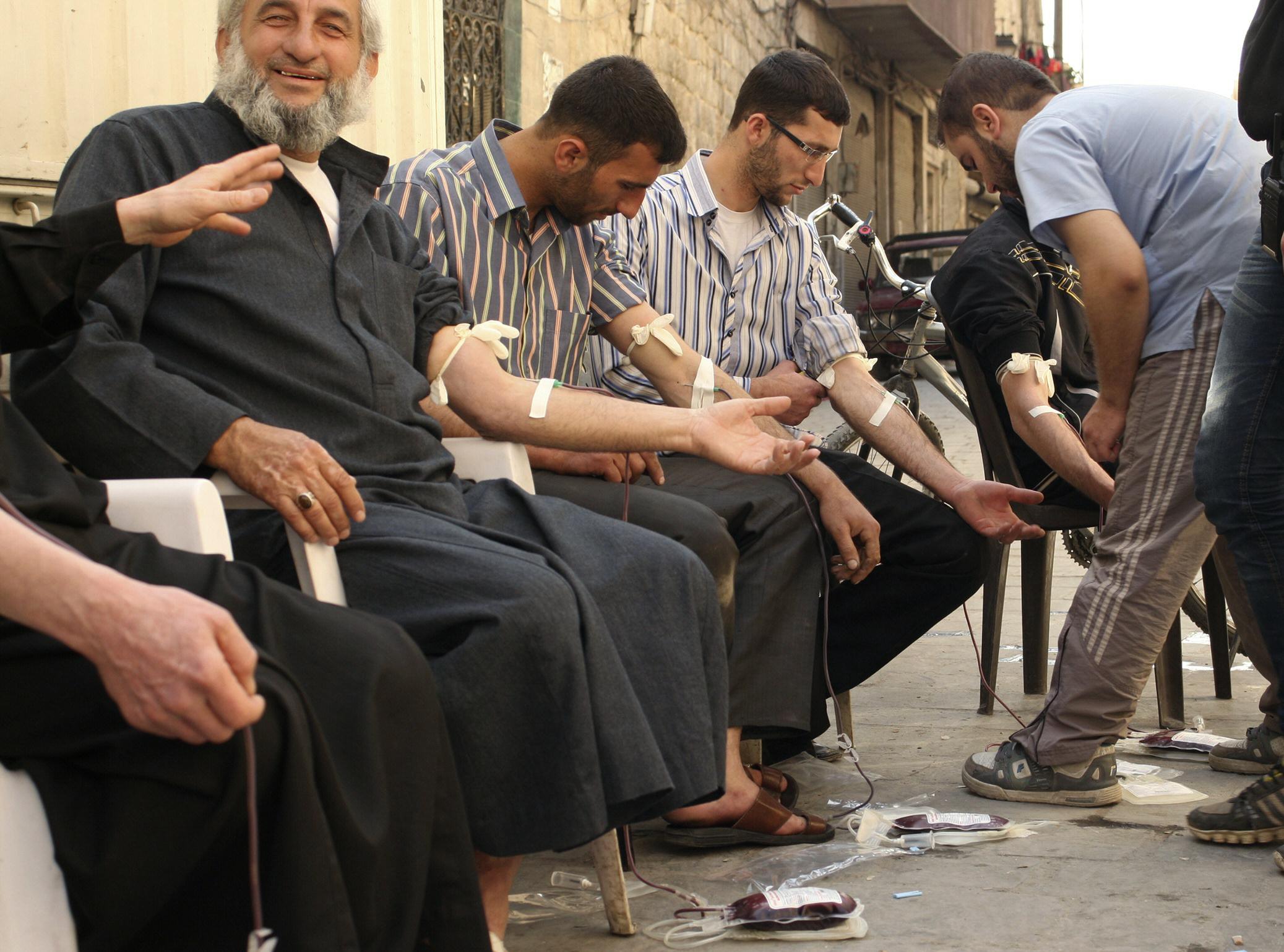
Five years into a brutal civil war, there is no shortage of ways to die in Syria. People are starving to death, most notably in the besieged western town of Madaya. Then there is the violence itself. Killing by aerial bombardment remains (so far) the preserve of government and international forces. Non-state armed groups are restricted to artillery and other ground-launched weapons, including grenades, car bombs, suicide bombs, and, of course, guns.
Syria has become a playground for byzantine international power games. What began as a non-violent protest against the government has degenerated into a free-for-all, with women and children paying a disproportionate price and terrorised civilians pouring out of the country.
The vulnerability of the Syrian people is compounded by a health system at the breaking point. Almost half of Syria’s ambulances have been destroyed; more than one-third of its hospitals no longer function; and the flow of pharmaceutical imports has slowed to a trickle, with none reaching rebel-held zones. Moreover, local pharmaceutical production has collapsed; Syria now meets less than 10 per cent of domestic demand, down from 90 per cent before the conflict.
This breakdown is not just an unfortunate side effect of the crisis; Syrian medical facilities have come under direct, seemingly deliberate attack. Physicians for Human Rights recorded 16 attacks on hospitals last October alone in a total of 346 attacks on 246 health facilities, while Doctors without Borders has condemned so-called double-tap tactics, in which aerial bombings of high-density civilian centers are followed by strikes on the nearest hospitals, removing emergency care for the injured. Even small clinics have been bombed by state-controlled forces.
Such attacks, particularly in Idlib, Aleppo, and Hama, have killed patients, doctors, and other health workers, destroyed ambulances and health infrastructure, and helped to drive medical personnel out of Syria. This is clearly unacceptable – not least because every country involved in the conflict has signed the Geneva Conventions, which explicitly prohibit “directing an attack against a zone established to shelter the wounded, the sick, and civilians...”
We do not have figures for all war-related deaths inside Syria. We do not know precisely how many children have died from preventable diseases as a result of the breakdown in vaccination programmes, or how many mothers and infants lost their lives for lack of medical equipment and personnel.
But some jarring data about conflict-related deaths is available. The Violations Documentation Centre (VDC), a Syrian human-rights network and think tank, recently provided the first reliable, large-scale dataset on violent civilian deaths since the outbreak of the conflict. It lists 78,769 fatalities – including name, age, gender, and cause of death – from September 2011 to January 2015.
An analysis of the VDC’s data conducted by the Centre for Research on the Epidemiology of Disasters, which I direct, shows that while most of these deaths were recorded in rebel-held regions, the pattern of killings was similar in both opposition- and government-controlled areas. Specifically, children are bearing the brunt of the violence. In both rebel- and government-held zones, children are more likely than men to be killed by explosives; they are more likely to die from aerial bombardments in rebel-held zones; and they are five times more likely to die from ground-launched explosives in areas under government control. Perhaps most shocking of all, of the 4,597 named women and children killed by bullets, 852 children and 695 women were executed.
The data may not be complete, but the existing evidence should be more than enough to spur stronger efforts to provide essential medical care and stabilise fragile communities. While an important initiative to improve the delivery of health and humanitarian assistance has been launched by the United Kingdom’s Department for International Development and the Wellcome Trust, it is nowhere near enough.
Much stronger humanitarian action in Syria is needed this year. First, aerial attacks and strikes against hospitals or clinics must be publicised, investigated, and condemned internationally.
Second, international humanitarian actors should step up their engagement with local medical associations and hospitals. With external organisations finding it virtually impossible to gain direct access to victims, partnerships with national NGOs, the Red Crescent, nursing associations, and even armed groups, where necessary, must be established to deliver services on the ground.
Third, the international community must prepare for changing health-care needs. Programmes must be tailored to address diseases like measles, hepatitis A, leishmaniasis, poliomyelitis, and meningitis, all of which are on the rise in Syria and in refugee camps. Here, greatly improving the flow of pharmaceutical imports is vital.
To achieve these goals requires new operational strategies based on experience from past conflicts. CRED’s Complex Emergency Database (CE-DAT) of public-health records from more than a decade of conflicts worldwide, including the wars in Darfur, Iraq, and Somalia, can provide valuable insight. For example, analyses of these data show that Syria’s 13.5 million internally displaced civilians are likely to be suffering the worst health impacts of the crisis.
New humanitarian interventions will, of course, cost money. But international donors have been so focused on the symptoms of the humanitarian crisis – Europe, for example, is concentrating its resources on controlling its borders – that they have failed to provide the support needed to help resolve it.
Clearly, we need innovative humanitarian strategies and a broader vision within the donor community. The recent Supporting Syria and the Region conference in London – sponsored by the United Kingdom, Germany, Norway, Kuwait and the UN – was one opportunity to develop such a vision for responding to protracted crises. But we have much more work to do leading up to the World Humanitarian Summit in Istanbul in May.
Public health and basic education, especially for Syria’s 13.5 million internally displaced people, must be high on the agenda. But first we must end the aerial attacks on Syrian hospitals and schools. - Project Syndicate